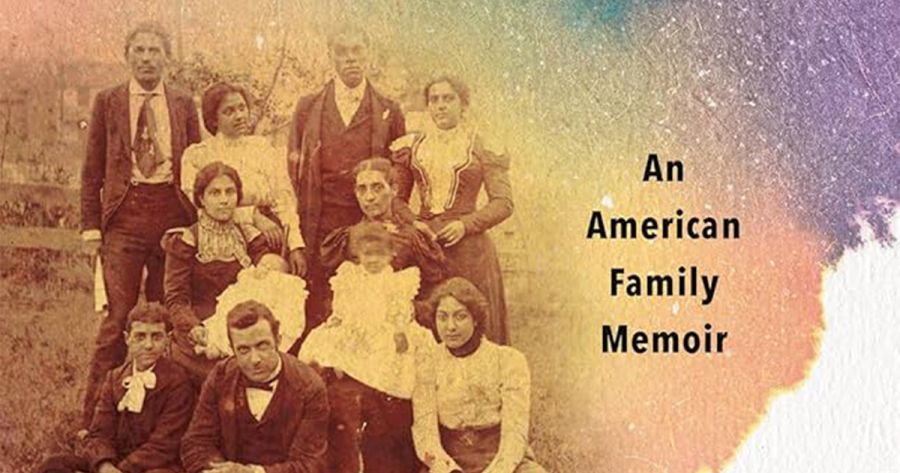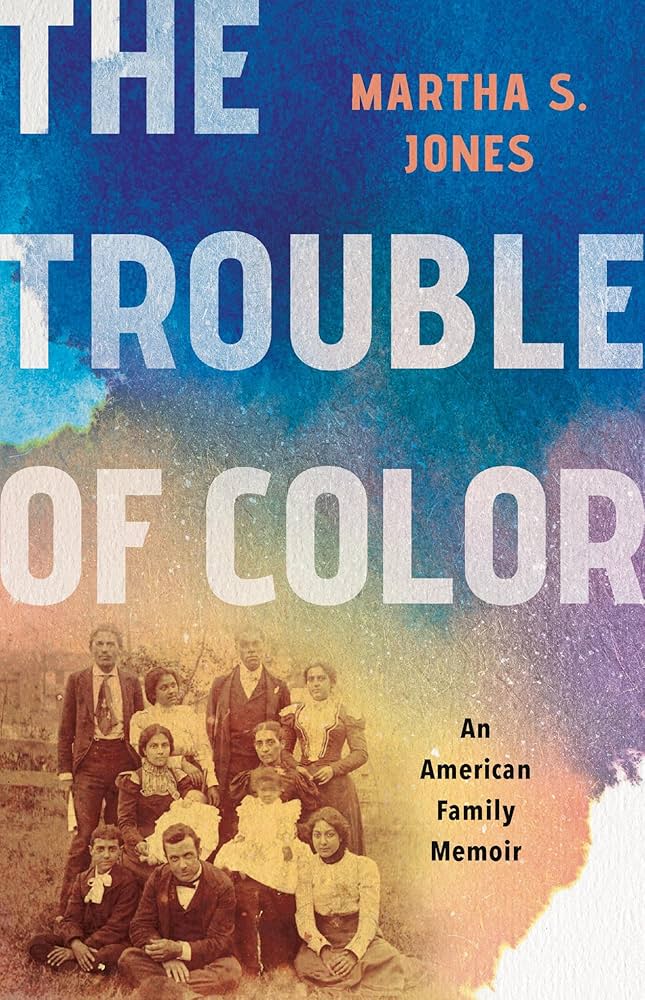
- Free Article: No
- Contents Category: Memoir
- Review Article: Yes
- Article Title: Historian in history
- Article Subtitle: A revelatory approach to family history
- Online Only: No
- Custom Highlight Text:
We are now in a time when the race crimes of the past that shored up colonisation, chattel slavery, and segregation can be more safely unravelled. Those of us whose families have been on the ‘wrong side’ of the colour line can discover the forces shaping our families and ourselves. Only in the past two decades or so have the veils of false respectability and dubious notions of human difference based on race been lifted sufficiently to allow a focus on the history of mixed-race family formations. Edward Ball’s Slaves in the Family (1998) was a joyous discovery for me, a mixed-race Aboriginal Australian who recognised the same pattern, every generation having both black and white relations in our families.
- Book 1 Title: The Trouble of Color
- Book 1 Subtitle: An American family memoir
- Book 1 Biblio: Basic Books, US$30 hb, 336 pp
- Book 1 Cover Small (400 x 600):

- Book 1 Cover (800 x 1200):

- Book 1 Readings Link: https://www.readings.com.au/product/9781541601000/the-trouble-of-color--martha-s-jones--2025--9781541601000#rac:jokjjzr6ly9m
Now more publications in the United States explore what Professor Martha S. Jones eloquently refers to as ‘the jagged edge of the color line’, where people get caught, are stigmatised, and have to manoeuvre and deal with pain and shame.
Jones is a Black scholar of note, a prizewinning author of four books, appointed a Society of Black Alumni Presidential Professor and Professor of History at Johns Hopkins University. This book documents her discovery of her family history and is a beacon of innovation.
Jones demonstrates a revelatory approach to mixed-race family histories, opening up a new genre of history. Her discovery begins with and repeatedly returns to the question, ‘Who do you think you are?’ a question that is revisited right to the end. As a history of self, her history is not concerned with a linear account. Truth is, this historical memoir messes with time! I am reminded of the Aboriginal Australian cultural concept of time, everywhen, whereby the past is constantly with us. While people and events have passed into eternal time, it travels along beside us, and it can, at times, insinuate itself into the present.
By way of example, Jones’s recalls that her grandfather was often mistaken as white and writes: ‘I was beginning to understand that Grandy and I were part of the same story, a family story, about how skin, and the misunderstandings it can invite, troubles … his past and my present came together. I saw myself in him and him in me.’
Not immediately cognisant of how this book challenges convention, I came to understand a clustering around the research and discovery process and a focus on the passion and spiritual nature of discovery of oneself through one’s ancestors. The multilayered journey the author took is geographic and historic, emotional and spiritual. Criss-crossing the country, through different states, slavery systems, segregation regimes, and the many ways in which Jones’s family members were manipulated, abandoned, and lost reveals how they struggled to survive and moved in and around, even over, this jagged ‘color line’ – as Jones herself now does.
The historian is indelibly in this history. It is indeed a history of self in a more profound way than the adage ‘when you read history you learn more about the author than the history they write’ conveys. Jones is not attempting to be the objective researcher here. She seeks a personal relationship with each of her ancestors through her research, and she is empathetic. Moreover, she is apprehended as a mixed-race person on her journey and in this sense becomes a historical family insider experiencing the vagaries of the ‘colour line’ over again. She is talked about, rather than to, as a ‘known’ subject. She is on one occasion, appallingly, used as a specimen to demonstrate the bodily outcomes of mixed-race ancestry. Jones is often treated with suspicion to the extent that she found it important to tread warily around this ‘colour line’ as she was following up leads in her research.
This is an unashamedly emotional journey in which Jones’s feelings are an integral part of her quest. She fiercely makes herself vulnerable and bares her soul. Visiting a plantation in Kentucky in search of her great-great-great-grandmother Nancy’s sister Tinah, she recalls her many visits to plantations before:
But standing on the grounds at Oxmoor was different. I was not a removed researcher. I was not a curious tourist. Instead, I was looking for signs of my own family, and my eyes stung as I took in the terrible beauty of Oxmoor. Could I resist the effect of its potent blend of restored opulence and repressed terror?
The historian Nell Irvin Painter cautioned Jones to ‘remember the blood on the page’, that the origins of this history lie in brutal force. On entering Oxmoor she recited in her head ‘remember the blood on the china, blood on the carpet, blood on the fine linens and the pristine plaster walls’. Later she found that Tinah could not be connected to that place and she was relieved:
I would not have to leave Nancy’s Tinah behind in a place where the groans and sighs of slaves today mix with the strains of violins and the whack of polo mallets ... the long-ago stench of hemp fields soaked with sweat is nearly overcome by the sweetness of freshly cut grass and spring flowers. I was glad not to leave Nancy’s Tinah there and clutched her memory tight like the family treasure it was.
Jones has demonstrated how history can be crafted into art, producing a historical memoir that is more than history as we have known it: conceptually fine, beautifully researched, her story facilitates and invites an emotional response and thus a connection to something larger than herself or ourselves. Her need to deal with the past by connecting to ancestors, relating to them, forgiving some, and demonstrating a deep love and reverence for them all is truly profound. Like all good art, it offers a space to connect to the sacred, eternal time.
1. Many people in Australia have grappled with similar, even identical, issues of mixed-race family formations. In Australia the ‘native people’, glossed as ‘Aboriginal’, have been conscripted into being the black ‘Other’ and enslaved (without explicit slavery laws). There is a plethora of Aboriginal biographies and autobiographies that explore mixed-race family formations that began to emerge in force in the 1970s. For the purposes of this review, I am drawing no comparisons between Australia and the United States’ history or scholarship.


Comments powered by CComment